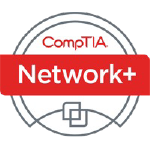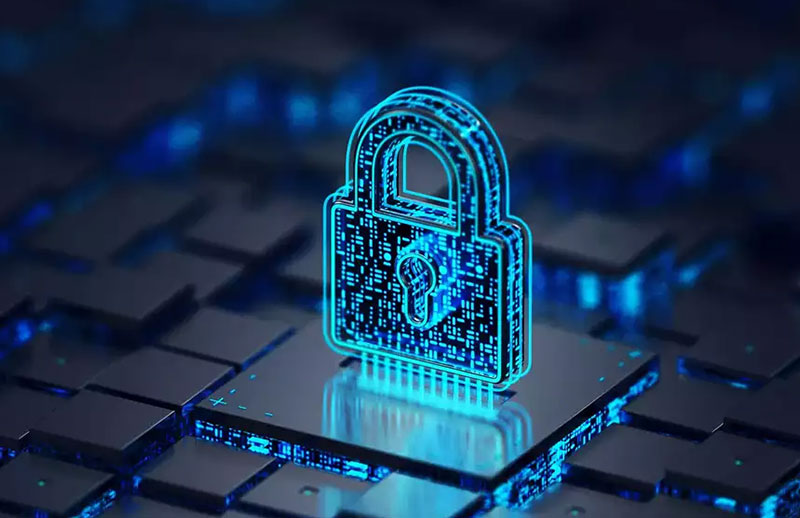

 CompTIA Security+ (SY0-701)
CompTIA Security+ (SY0-701)
Course Length:
1 Week 5 Days, 8 hours/day, from: 9:00 am to 5:00 pm
2 Weeks, 3 Hours/day, from 6:00 pm to 9:00 pm
CompTIA Security+ training provides an excellent introduction to the security field and is typically a better entry point than jumping right into an advanced security program. With Security+, you’ll build a solid foundation of knowledge that you can build upon—helping you advance your career in the months and years to come.
Whether your goal is to become Security+ certified for your job, to prove your basic knowledge of security concepts or to gain more knowledge to secure your network, expert training from M CTC is the perfect solution.
Whether your goal is to become Security+ certified for your job, to prove your basic knowledge of security concepts or to gain more knowledge to secure your network, expert training from MCTC is the perfect solution.
This course is intended for students wishing to prepare for the CompTIA Security+ Certification Exam. The qualification is aimed primarily at networking professionals, but because security is vital to all levels and job roles within an organization, it will also benefit PC support analysts, application developers and senior managers in accounting, sales, product development and marketing.
None, but CompTIA A+ and Network+ certifications, or equivalent knowledge, and six to nine months’ experience in networking, including configuring security parameters, are strongly recommended.
1 - COMPARING SECURITY ROLES AND CONTROLS
Topic 1A: Compare and Contrast Information Security Roles
Topic 1B: Compare and Contrast Security Control and Framework Types
2 - EXPLAINING THREAT ACTORS AND THREAT INTELLIGENCE
Topic 2A: Explain Threat Actor Types and Attack Vectors
3 - PERFORMING SECURITY ASSESSMENTS
Topic 3A: Assess Organizational Security with Network Reconnaissance Tools
Topic 3B: Explain Security Concerns with General Vulnerability Types
Topic 3C: Summarize Vulnerability Scanning Techniques
Topic 3D: Explain Penetration Testing Concepts
4 - IDENTIFYING SOCIAL ENGINEERING AND MALWARE
Topic 4A: Compare and Contrast Social Engineering Techniques
Topic 4B: Analyze Indicators of Malware-Based Attacks
5 - SUMMARIZING BASIC CRYPTOGRAPHIC CONCEPTS
Topic 5A: Compare and Contrast Cryptographic Ciphers
Topic 5B: Summarize Cryptographic Modes of Operation
Topic 5C: Summarize Cryptographic Use Cases and Weaknesses
Topic 5D: Summarize Other Cryptographic Technologies
6 - IMPLEMENTING PUBLIC KEY INFRASTRUCTURE
Topic 6A: Implement Certificates and Certificate Authorities
Topic 6B: Implement PKI Management
7 - IMPLEMENTING AUTHENTICATION CONTROLS
Topic 7A: Summarize Authentication Design Concepts
Topic 7B: Implement Knowledge-Based Authentication
Topic 7C: Implement Authentication Technologies
Topic 7D: Summarize Biometrics Authentication Concepts
8 - IMPLEMENTING IDENTITY AND ACCOUNT MANAGEMENT
CONTROLS
Topic 8A: Implement Identity and Account Types
Topic 8B: Implement Account Policies
Topic 8C: Implement Authorization Solutions
Topic 8D: Explain the Importance of Personnel Policies
9 - IMPLEMENTING SECURE NETWORK DESIGNS
Topic 9A: Implement Secure Network Designs
Topic 9B: Implement Secure Switching and Routing
Topic 9C: Implement Secure Wireless Infrastructure
Topic 9D: Implement Load Balancers
10 - IMPLEMENTING NETWORK SECURITY APPLIANCES
Topic 10A: Implement Firewalls and Proxy Servers
Topic 10B: Implement Network Security Monitoring
Topic 10C: Summarize the Use of SIEM
11 - IMPLEMENTING SECURE NETWORK PROTOCOLS
Topic 11A: Implement Secure Network Operations Protocols
Topic 11B: Implement Secure Application Protocols
Topic 11C: Implement Secure Remote Access Protocols
12 - IMPLEMENTING HOST SECURITY SOLUTIONS
Topic 12A: Implement Secure Firmware
Topic 12B: Implement Endpoint Security
Topic 12C: Explain Embedded System Security Implications
13 - IMPLEMENTING SECURE MOBILE SOLUTIONS
Topic 13A: Implement Mobile Device Management
Topic 13B: Implement Secure Mobile Device Connections
14 - SUMMARIZING SECURE APPLICATION CONCEPTS
Topic 14A: Analyze Indicators of Application Attacks
Topic 14B: Analyze Indicators of Web Application Attacks
Topic 14C: Summarize Secure Coding Practices
Topic 14D: Implement Secure Script Environments
Topic 14E: Summarize Deployment and Automation Concepts
15 - IMPLEMENTING SECURE CLOUD SOLUTIONS
Topic 15A: Summarize Secure Cloud and Virtualization Services
Topic 15B: Apply Cloud Security Solutions
Topic 15C: Summarize Infrastructure as Code Concepts
16 - EXPLAINING DATA PRIVACY AND PROTECTION
CONCEPTS
Topic 16A: Explain Privacy and Data Sensitivity Concepts
Topic 16B: Explain Privacy and Data Protection Controls
17 - PERFORMING INCIDENT RESPONSE
Topic 17A: Summarize Incident Response Procedures
Topic 17B: Utilize Appropriate Data Sources for Incident Response
Topic 17C: Apply Mitigation Controls
18 - EXPLAINING DIGITAL FORENSICS
Topic 18A: Explain Key Aspects of Digital Forensics Documentation
Topic 18B: Explain Key Aspects of Digital Forensics Evidence Acquisition
19 - SUMMARIZING RISK MANAGEMENT CONCEPTS
Topic 19A: Explain Risk Management Processes and Concepts
20 - IMPLEMENTING CYBERSECURITY RESILIENCE
Topic 20A: Implement Redundancy Strategies
Topic 20B: Implement Backup Strategies
Topic 20C: Implement Cybersecurity Resiliency Strategies
21 - EXPLAINING PHYSICAL SECURITY
Topic 21A: Explain the Importance of Physical Site Security Controls
Topic 21B: Explain the Importance of Physical Host Security Controls

CompTIA A+ certification is an internationally recognized, vendor-neutral certification that many employers consider...
More
CompTIA Linux+ certification provides a foundation for individuals to work and maintain Linux installations...
More
CompTIA Security+ training provides an excellent introduction to the security field and is typically a better...
More